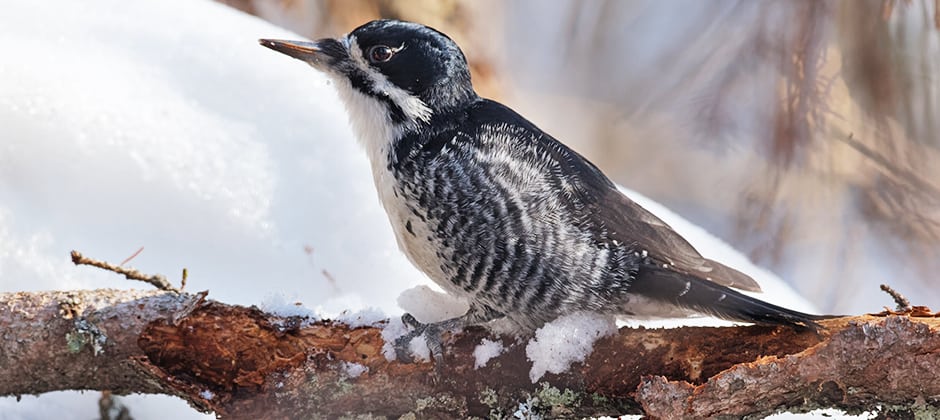Share this article
For fire-dependent woodpeckers, megafires are too intense
Species like the black-backed woodpecker historically have relied on landscapes shaped by high-intensity forest fires, but researchers recently found the intense megafires that now burn across California and the West may be too severe even for them.
In two recent studies published in The Journal of Applied Ecology and The Condor: Ornithological Applications, researchers tracked the habitat selection patterns of black-backed woodpeckers (Picoides arcticus) living in recently burned forests in Northern California. To start, they tracked the movements of fledglings and adults using tiny radio transmitters that weighed about as much as a large paperclip.
“The transmitters provided a secret window into the birds’ movements and habitat use in burned forests,” said Andrew Stillman, a PhD candidate at the University of Connecticut and lead author of the studies.
He and his colleagues knew that intense fires have increased each year, and the woodpeckers are associated with high-severity burned forests where the majority of trees are dead. “California’s megafires are larger and more homogenous than the fires we’ve seen in the past,” he said. “Will this be a good thing for fire-loving woodpeckers?”
Initial research based on data collected from the radio transmitters showed that adults tended to use patches of high-severity burned forests where they had easy access to the woodboring beetles they love to eat. “Newly burned forests provide a huge feast for black-backed woodpeckers,” Stillman said.
But fledglings were a different story. The researchers found they sought areas that burned at lower severity, where living trees offered more cover and greater protection from predators.
With this information about preferences in the forest, the team wanted to figure out where the adults were nesting. Data from 118 nests between 2011 and 2018 showed the birds were nesting at the edges of areas burned at high severity. This allowed them to take advantage of high-severity fires, but they were also close to the less burned areas that their fledglings preferred.
Stillman said this research shows the importance of pyrodiversity — diversity in age, size and severity of burned patches. Historically, fires in California had a mix of low- and high-severity fires, he said, which left behind more variation in post-fire habitat. “We’re seeing a global shift toward larger and more severe forest fires that leave more homogenous, high-severity patches. The woodpeckers are losing access to the edge habitat that this species needs.”
Not only are black-backed woodpeckers affected by these severe fires, but other species that rely on woodpecker cavities may be as well, Stillman said. The woodpeckers excavate a brand new cavity every time they attempt to breed, leaving holes that other animals, like flying squirrels and bluebirds, use for shelter. “They play a keystone role and provide valuable resources to many post-fire wildlife species,” he said.
Stillman said these studies provide information that managers may be able to use in the future, especially the knowledge that not all fires are equally good fires for black-backed woodpeckers. It also shows the importance of saving edge habitat as key wildlife habitat.
“I think there’s a message of hope here in terms of management after a wildfire burns,” he said. “We seek to provide information about what black-backed woodpeckers need to reap the benefits of forest fire. This research adds important information that will help people manage recently burned forests in a way that maintains important habitat for wildlife while reducing conflict with other management objectives.”
Header Image: Black-backed woodpeckers nest at the edge of high severity burned forest. ©Kurt Bauschardt








